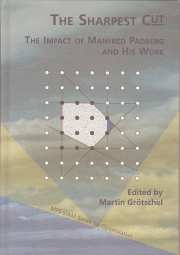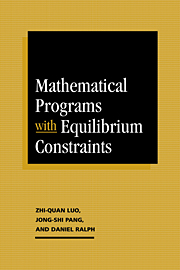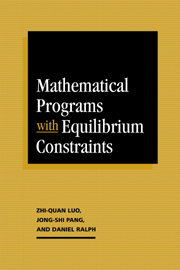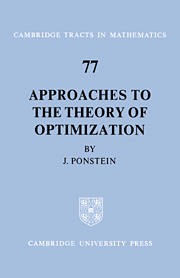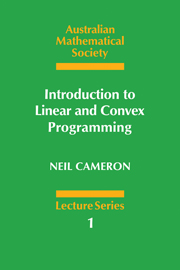The Sharpest Cut
The Sharpest Cut is written in honor of Manfred Padberg, who has made fundamental contributions to both the theoretical and computational sides of integer programming and combinatorial optimization. This outstanding collection presents recent results in these areas that are closely connected to Padberg's research. His deep commitment to the geometrical approach to combinatorial optimization can be felt throughout this volume; his search for increasingly better and computationally efficient cutting planes gave rise to its title.
The peer-reviewed papers contained here are based on invited lectures given at a workshop held in October 2001 to celebrate Padberg's 60th birthday. Grouped by topic (packing, stable sets, and perfect graphs; polyhedral combinatorics; general polytopes; semidefinite programming; computation), many of the papers set out to solve challenges set forth in Padberg's work. The book also shows how Padberg's ideas on cutting planes have influenced modern commercial optimization software.
Product details
January 1987Hardback
9780898715521
392 pages
260 × 185 × 25 mm
0.91kg
This item is not supplied by Cambridge University Press in your region. Please contact Soc for Industrial & Applied Mathematics for availability.
Table of Contents
- Preface
- Part I: Manfred Padberg: Curriculum Vitae and Survey of His Work
- Chapter 1: Manfred Padberg: Curriculum Vitae
- Chapter 2: Time for Old and New Faces, L. Wolsey
- Part II: Packing, Stable Sets, and Perfect Graphs
- Chapter 3: Combinatorial Packing Problems, R. Borndörfer
- Chapter 4: Bicolorings and Equitable Bicolorings of Matrices, M. Conforti, G. Cornuéjols, and G. Zambelli
- Chapter 5: The Clique-Rank of 3-Chromatic Perfect Graphs, J. Fonlupt
- Chapter 6: On the Way to Perfection: Primal Operations for Stable Sets in Graphs, C. Gentile, U.-U. Haus, M. Köppe, G. Rinaldi, R. Weismantel
- Chapter 7: Relaxing Perfectness: Which Graphs Are “Almost” Perfect?, A.K. Wagler
- Part III: Polyhedral Combinatorics
- Chapter 8: Cardinality Homogeneous Set Systems, Cycles in Matroids, and Associated Polytopes, M. Grötschel
- Chapter 9: (1,2)-Survivable Networks: Facets and Branch-and-Cut, H. Kerivin, A.R. Mahjoub, and C. Nocq
- Chapter 10: The Domino Inequalities for the Symmetric Traveling Salesman Problem, C. Naddef
- Chapter 11: Computing Optimal Consecutive Ones Matrices, M. Oswald and G. Reinelt
- Chapter 12: Protein Folding on Lattices: An Integer Programming Approach, V. Chandru, M.R. Rao, and G. Swaminathan
- Part IV: General Polytopes,
- Chapter 13: On the Expansion of Graphs of 0/1-Polytopes, V. Kaibel
- Chapter 14: Typical and Extremal Linear Programs, G.M. Ziegler
- Part V: Semidefinite Programming
- Chapter 15: A Cutting Plane Algorithm for Large Scale Semidefinite Relaxations, C. Helmberg
- Chapter 16: Semidefinite Relaxations for Max-Cut, M. Laurent
- Part VI: Computation
- Chapter 17: The Steinberg Wiring Problem, N.W. Brixius and K.M. Anstreicher
- Chapter 18: Mixed-Integer Programming: A Progress Report, R.E. Bixby, M. Fenelon, Z. Gu, E. Rothberg, and R. Wunderling
- Chapter 19: Graph Drawing: Exact Optimization Helps!, P. Muntzel and M. Jünger
- Part VII: Appendix
- Chapter 20: Dinner Speeches
- Index.

